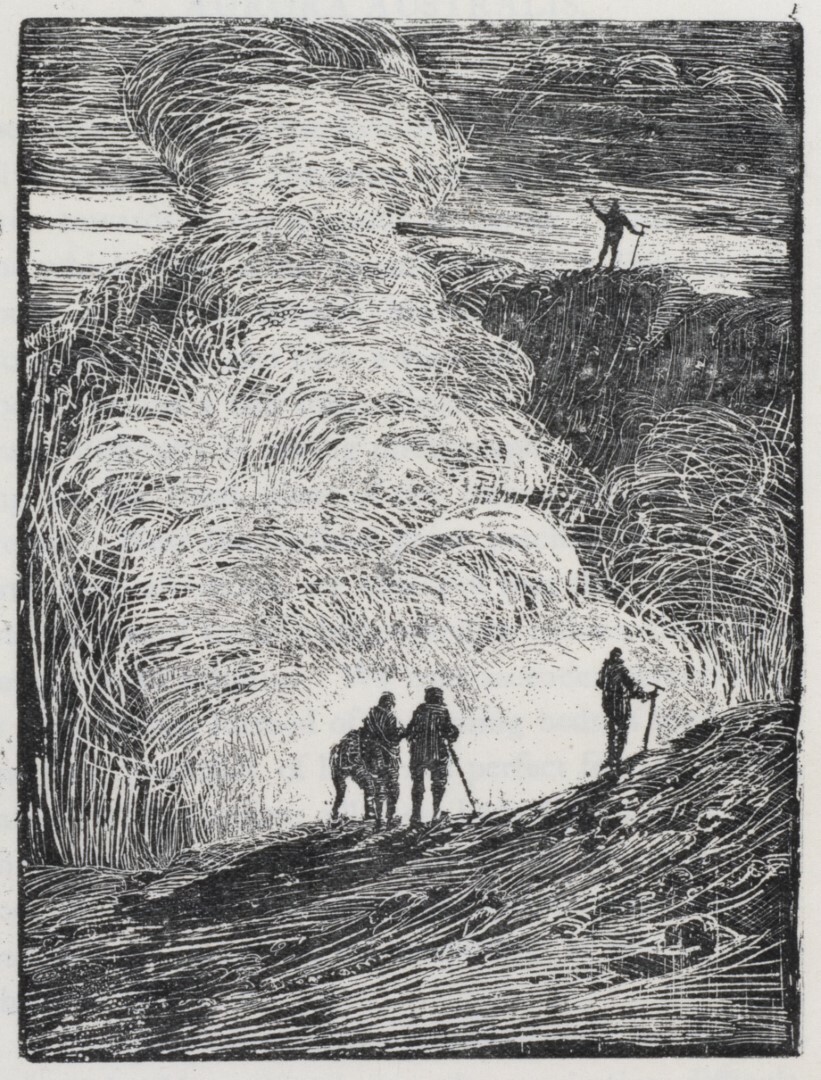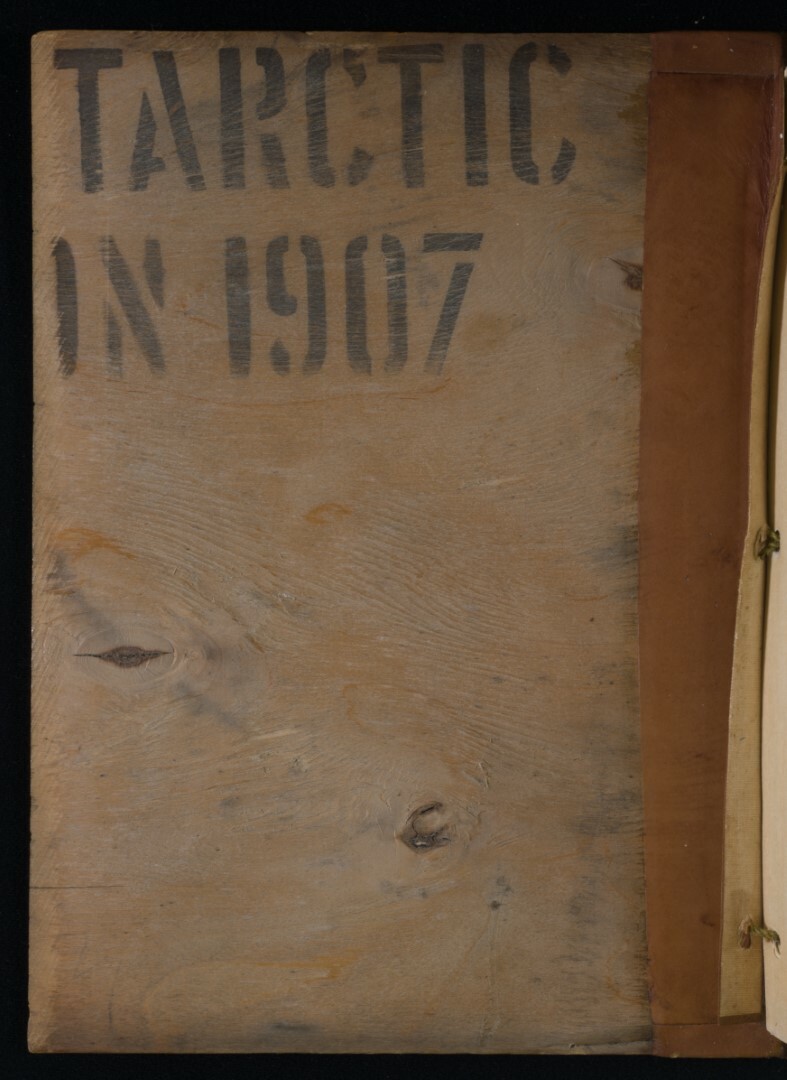Mount Erebus, the world's southernmost active volcano, has long attracted the attention of explorers, artists and scientists. As a place of historic achievement and of tragedy, references to Mount Erebus can conjure strong emotions.
The accounts of the first recorded human engagements with the volcano are filled with exhilaration and awe. Canterbury Museum’s collection of rare Antarctic books provides an insight into some of these first impressions.
![Lithograph based on original watercolour by John Edward Davis. R Carrick [lithographer]. 1847. Beaufort Island and Mount Erebus, Discovered 28th January, 1841. In James Clark Ross. 1847. A Voyage of Discovery and Research in the Southern and Antarctic Regions During the Years 1839-43, Volume 1. London: J Murray. Canterbury Museum LIBA849.1](https://cms.canterburymuseum.com/assets/Image-1-Lithograph-based-on-J-E-Davis-watercolour-Large.jpg?v=1680562313)
The spectacle of the ice-covered volcano is recorded in text and image in the pages of notable expedition accounts, which are among the most prized Antarctic cultural artefacts. The first depictions of the volcano were committed to paper on 28 January 1841 during the voyage captained by James Clark Ross. With no secure landing site identified, the scene was admired from the safety of the expedition ships, HMS Erebus and HMS Terror, which gave their names to the active volcano and its extinct smaller neighbour.
The excitement and sense of wonder is palpable in the recollections of Joseph Dalton Hooker, assistant surgeon and naturalist on board Erebus, when he wrote, "This was a sight so surpassing everything that can be imagined … it caused a feeling of awe to steal over us".
Sixty-six years later, despite the risks involved in climbing a glaciated active volcano, five members of Ernest Shackleton’s Nimrod expedition (1907–1909) did just that. Venturing out from the Cape Royds expedition hut on 5 March 1908, they reached the summit in less than a week.
This was the first ascent of Mount Erebus and the first glimpse down into the summit crater. Although Shackleton’s expedition artist George Marston was not among the five-person ascent team, he created two atmospheric impressions of the crater’s edge inspired by second-hand accounts. Using relief and intaglio printing techniques Marston produced a pair of inverse images from a single etched printing plate. These prints appear separately in two rare Antarctic books, both held in the Museum collection: Aurora Australis and The Antarctic Book: Winter quarters 1907–1909.

Aurora Australis is famed for being the first book to be written, illustrated and printed in Antarctica. Making the book provided creative and meaningful occupation for the team during the dark winter months of 1908, which helped prevent the onset of depression and lethargy.
Setting the tone for the content, the cover image of Aurora Australis, a planographic aluminium plate print produced by Marston, features a silhouette of Mount Erebus under the aurora’s curtains of light. The volcano features in almost half of the book’s illustrations, poems and stories.
Published a year later, The Antarctic Book was produced to accompany the deluxe limited edition of Shackleton’s expedition account The Heart of the Antarctic. Its content repeats some of the poetry and fiction found in Aurora Australis. The main point of difference is the artwork. Marston chose to publish different images in the two books.

In Aurora Australis, Marston’s relief print At the edge of the crater (above) accompanies T W Edgeworth David’s narrative of the ascent. Created by rolling a layer of ink onto the plate surface, the etched lines did not receive ink and therefore appear white in the final image. As a result, huge billowing plumes of steam appear to be blazing with a fierce white heat. The fiery light emanating from the crater throws the figures in the foreground into sharp silhouette.

Conversely, in The Antarctic Book Marston used an intaglio technique to create The crater of Mount Erebus (above). Pressing the ink into the etched grooves and polishing the plate surface clean before printing has resulted in a tonal reversal of the original image. Erebus now emits a choking black smoke. The figures appear ghostly white, bathed in moonlight. A triumphant figure shines star-like against a black sky at the summit.
Danger, spectacle and conquest are at the heart of the narrative of both images. Only when they are viewed side by side can the contrasting atmospheres of the two prints be fully appreciated: both offer an insight into the varying character and dynamic nature of Erebus.

Notes on the copies of Aurora Australis
All copies of Aurora Australis were distributed among the team and among the expedition’s supporters. However, the exact number produced was not recorded and the books were not numbered. This has caused speculation about the number of books in circulation. In 2019, there were 68 confirmed copies in private or institutional ownership, and at least twenty more are known to exist, but their current ownership is unconfirmed.
One of the unique identifiers of each copy is the text on the inside front and/or back covers, which are made from the wooden venesta boards used in the packing crates. Books are often referred to by this text, hence the ‘Butter’ copy, the ‘Tinned fruit’ copy, and the ‘Turtle soup’ copy. Canterbury Museum holds the ‘TARCTIC in 1907’ copy, bought in 1975 for £450. Aurora Australis remains one of the most sought after Antarctic cultural artefacts. In 2019 a copy sold at auction for $159,900 NZD.





